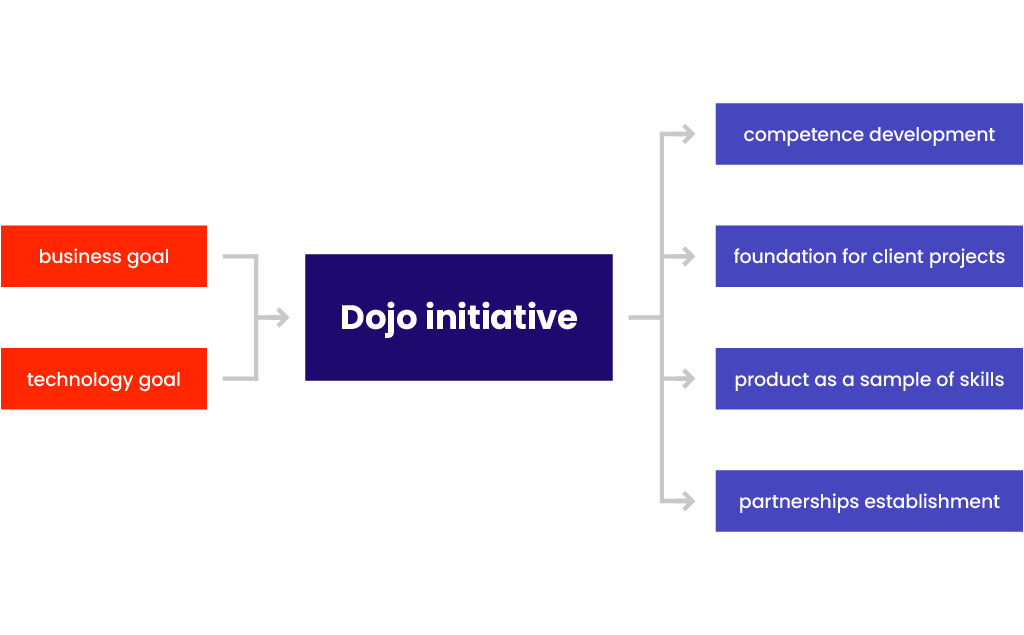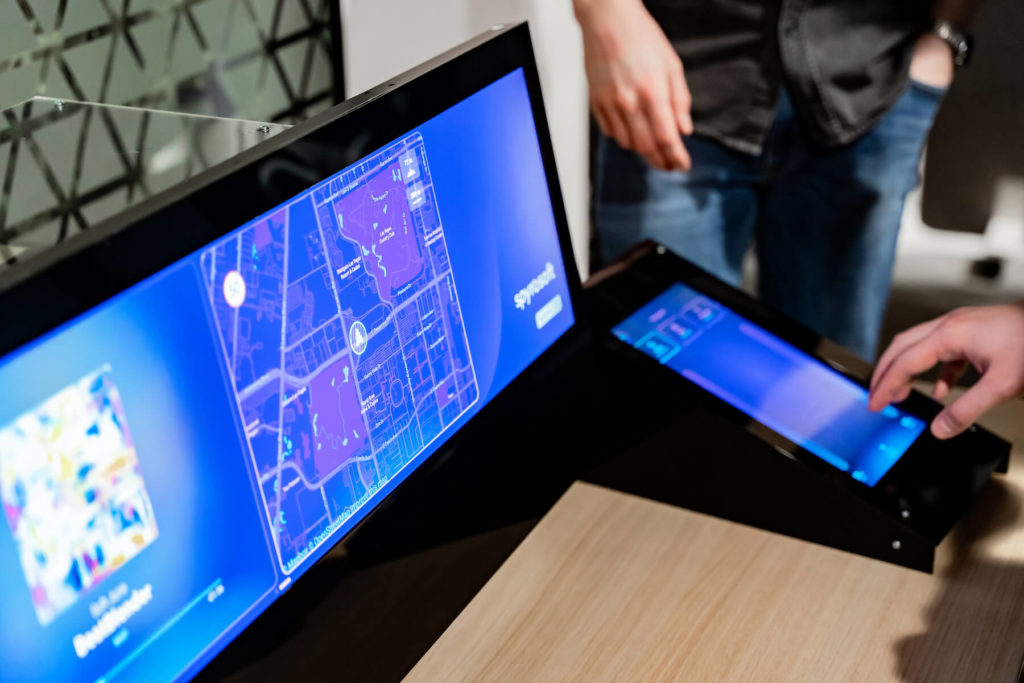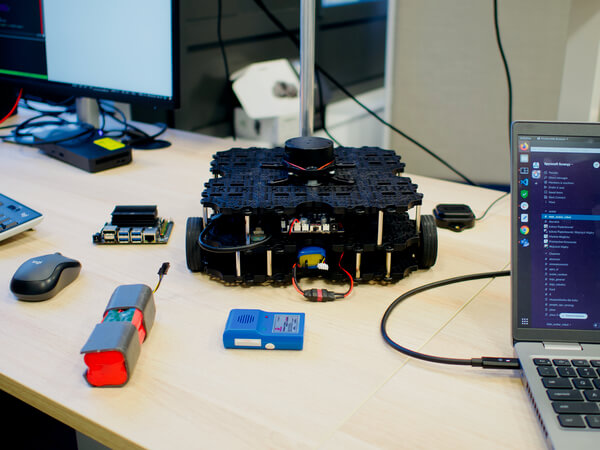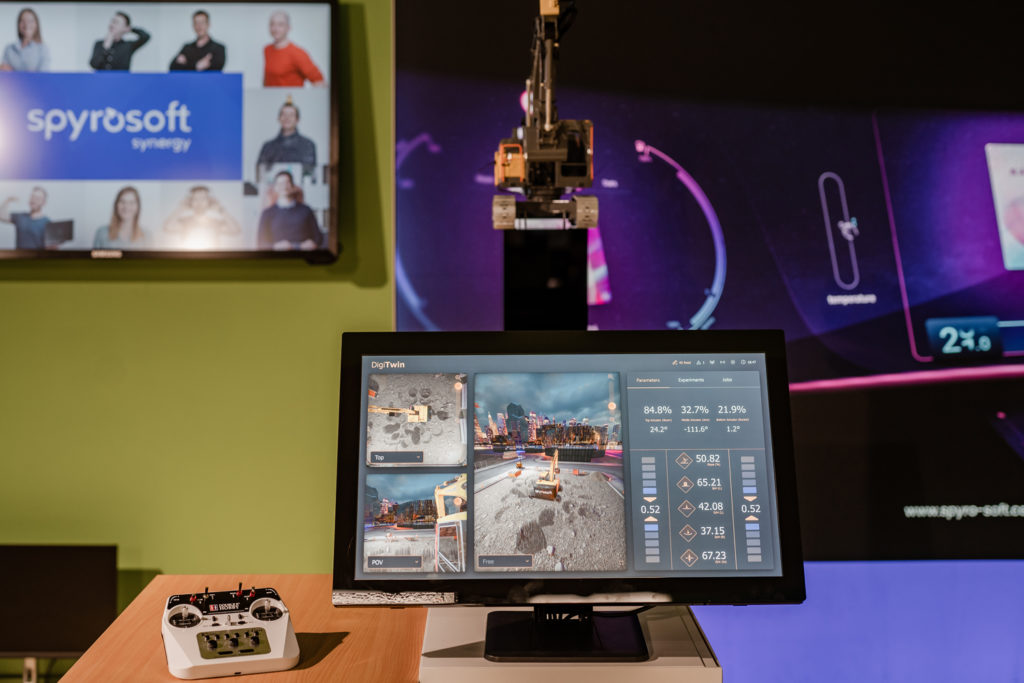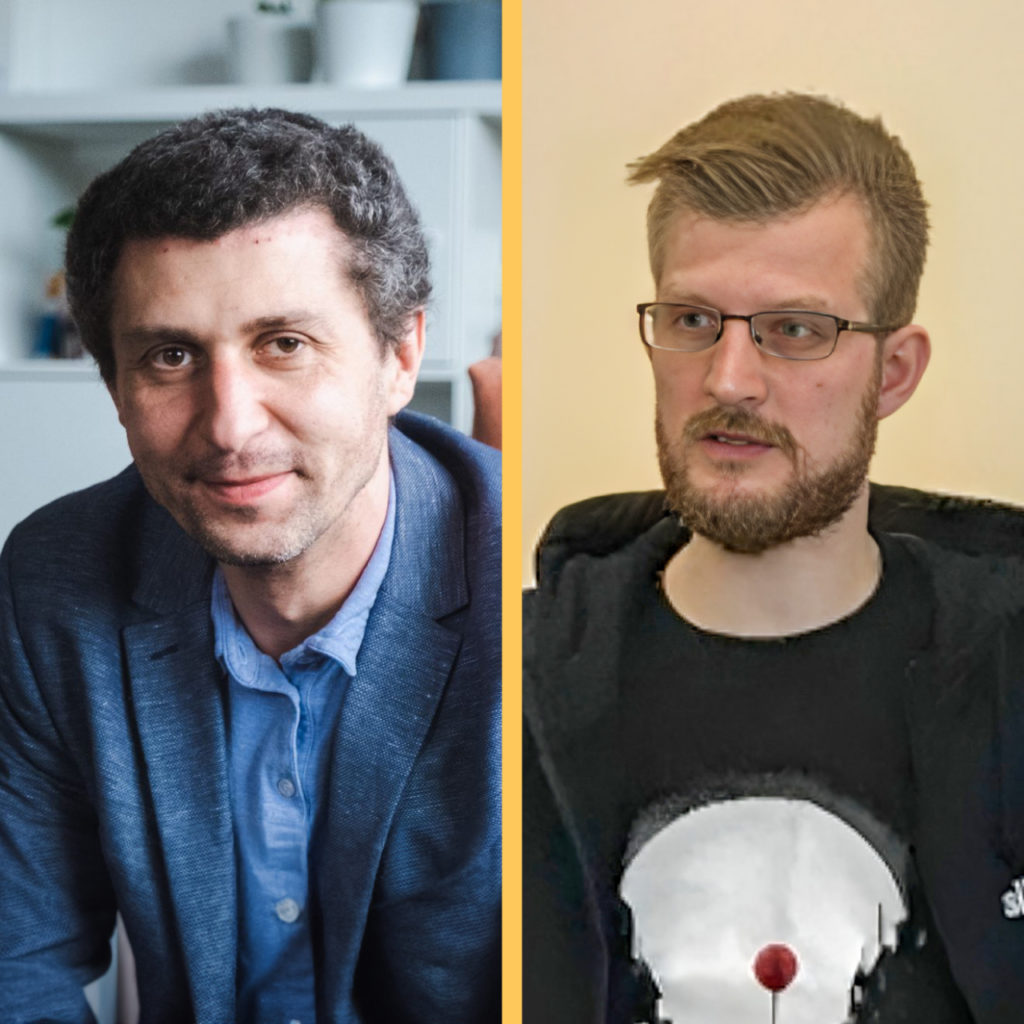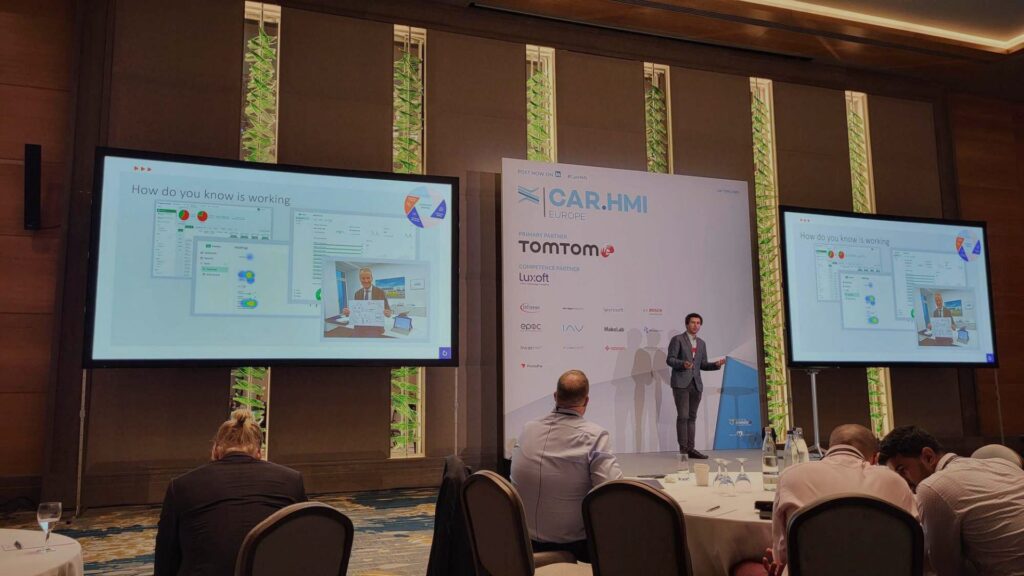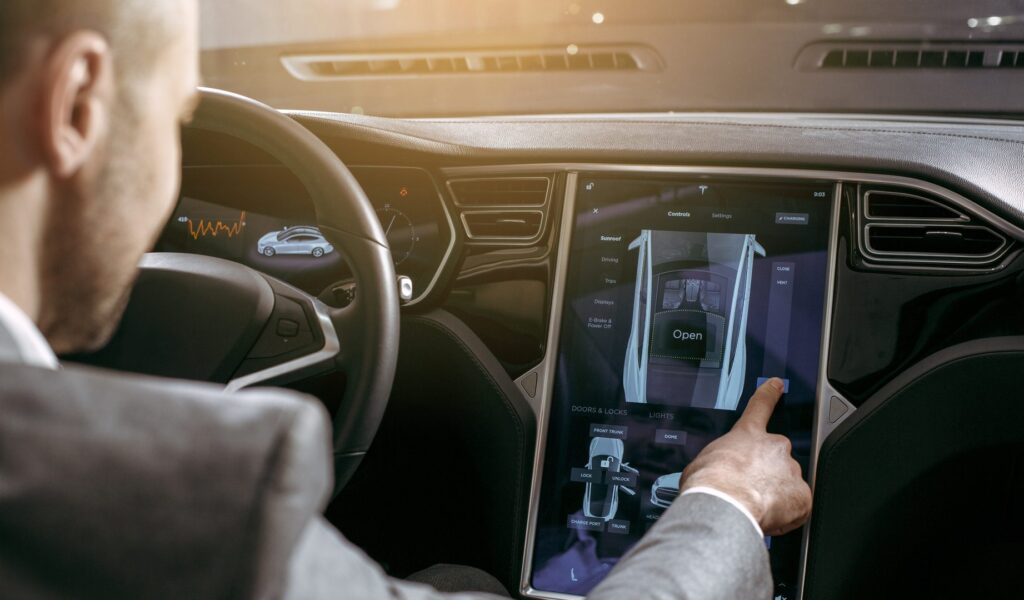Wavey is a gesture-controlled in-vehicle infotainment system. The IVI application is operated not from the large but from an external control screen located between the seats at an angle of about 30 degrees.
In addition to hardware and low-level layer, we provided an excellent product presentation. The interface had to be intuitive and clear-cut to keep the driver focused on the road. We used Qt technology, as it’s a good framework for creating such complex projects. On the backend, we implemented a microHMI architecture to maintain more flexibility in the development process.
